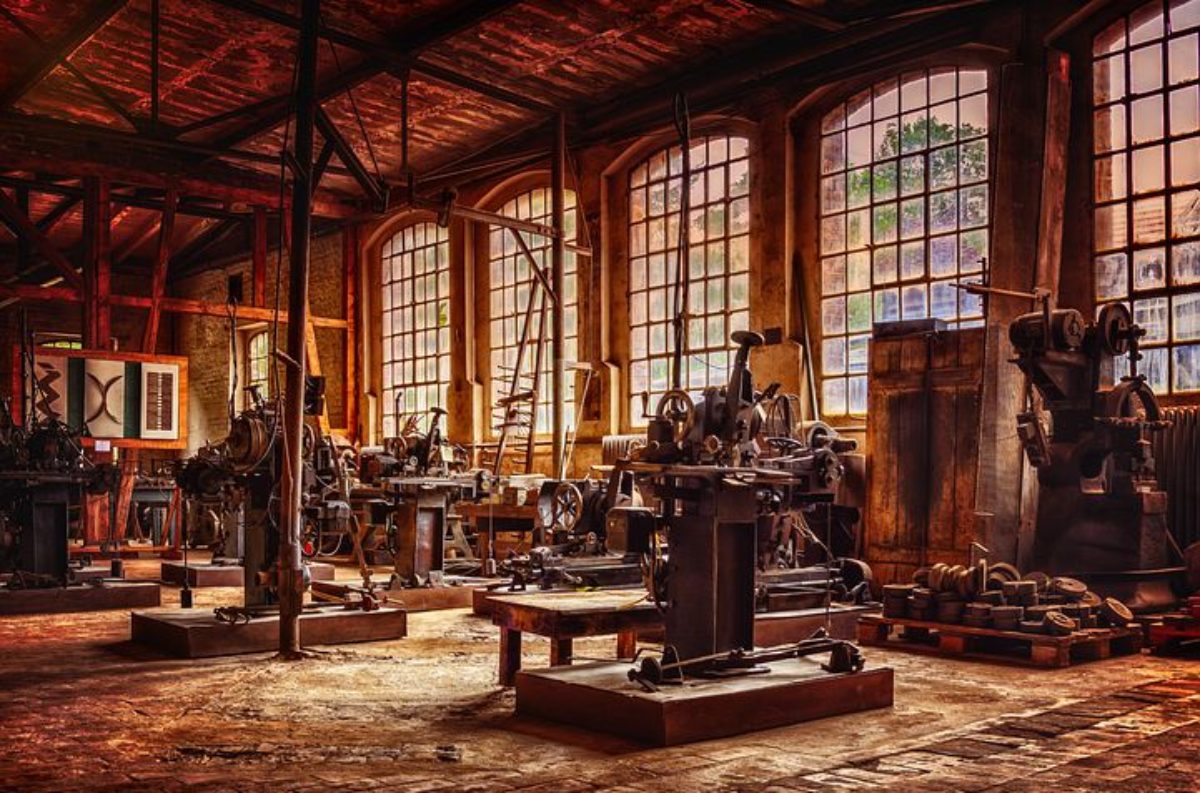Metalwork would shape the history of mankind.
The history of metalwork is fascinating and we must first begin at the dawn of civilization.
The Stone Age

The longest era in human development is the stone age which lasted two million years. In this time period, most humans used what was readily available in nature which included branches, bones, and stones for the creation of tools.
As they studied the stones more closely the early humans began to learn ways to manipulate the material to make sharp cutting edges and arrows. This soon leads to the discovery of the first metal
The Native Metals
Copper, gold, and silver are metals that can be found in their pure state in nature. Our ancestors began to extract these metals in 5000 BC. These metals became known as the native metals and would eventually lead to mankind entering the bronze age. These discoveries lead to the beginning of the fundamentals of metalworking.
The first six metals.
The first metals used by prehistoric man included the following:
- Gold
- Silver
- Copper
- Lead
- Tin
- Iron
Gold and Silver

One of the most popular and well known of all the metals. Nuggets of gold stood out among its surround due to its famous glowing sheen. Gold (paid link) was often found mixed in with sediment in river beds. This process leads to the discovery of silver, which is often dark and dull in its native form. Both of these materials were relatively easy to collect and shape. The intrinsic beauty of gold and silver-lead these metals to be a natural fit for creating decorative jewelry and valuable coins, which is still being done to this day.
Copper

Copper (paid link)was an extremely important discovery for ancient man. This metal existed in its natural state in many places all over the world. The discovery of copper created the first steps toward modern metallurgy, which is the science of studying the properties of metals including their production and purification. Copper was key in creating the first metal age of man known as the bronze age.
As human beings began to discover new metals they realized that each metal contained different properties. Copper could be hardened by forging and was used to make the first primitive tools. Gold and silver were much softer and was often used for ornamentation and the first coins used for money.
Lead Metals
Lead is a material that is soft and easily formed into different shapes. Soon people used lead to make vessels to transport liquid. Lead was instrumental in fashioning the pipes that were used to create the first Roman aqueducts.
Tin Metals
Tin is a relatively soft and ductile metal. The discovery of tin was extremely important as it was tin combined with copper that allowed for human beings to enter into the bronze age.
Iron Metals
Was used periodically by ancient man but was considered not as durable as bronze. Naturally, iron is brittle and it corrodes very fast when exposed to air. Iron became much more valuable as human beings developed the technology for steel. Early iron actually came from space meteorites and was considered a literal gift from the gods.
Bronze Age

The discovery of bronze (paid link) was truly one of mankind’s first great innovations. The ancients combined tin and copper to create bronze. This allowed the bronze to be hardenable by forging and easily casts into very specific shapes. This amazing material gave rise to the bronze age.
Smelting, or the extraction of metal from ore, was first developed in Southwest Asia. The technique of smelting soon allowed for large quantities of metal to be extracted and poured into molds to make almost any desired shape. This was important advancement that allowed mankind to enter the bronze age.
Smelting allowed for the creation of copper. However, copper was soft and not a big improvement over the stone materials. Mankind actually came upon a truly superior material when they combined copper with tin to create bronze.
The bronze age spread rapidly and spanned between Southwest Asia and Eurasia by 2000 BC.
Iron Age

As smelting pits began to advance, mankind began to be able to produce temperatures hot enough to extract iron from ore. This iron was not very durable and bronze was still the most popular material for making weapons and tools.
At around 1,000 BC people that lived along the Black Sea began to experiment with iron. They wanted to create weapons that were stronger than bronze. They pulled out very sturdy weapons after several rounds of firing and hammering. This process allowed the creation of wrought iron, which was hard and allowed for some of the strongest armies in the region.
Ancient China created cast iron around 500 BC. The Chinese built giant furnaces to burn larger quantities of iron and wood. They then smelted this material into a liquid and then poured it into carved molds. This wrought iron was great for household cookery and statures.
In 400 BC, India created the first method to turn iron into steel. They created crucibles (paid link) that were clay receptacles to hold iron bars and bits of charcoal. They then sealed the containers and inserted them into a furnace. The Indians then blasted the furnace with air from bellows causing the wrought iron to melt and absorb the carbon from the charcoal. The ingots of the first steel were born while these crucibles cooled.

The Indians would ship this steel all over the world. They even sent steel to Damascus (paid link). This steel is a key element that leads to the creation of the famous swords of Damascus (paid link). One could find Indian steel hammered into the swords of Rome.
The iron age had begun and mankind would never be the same. Tune in soon for the next article in this fascinating series.


